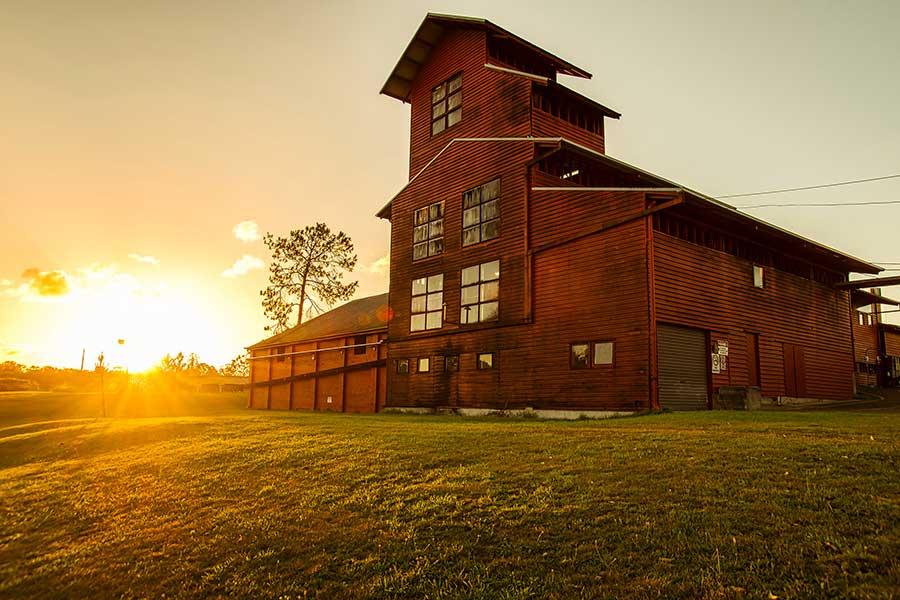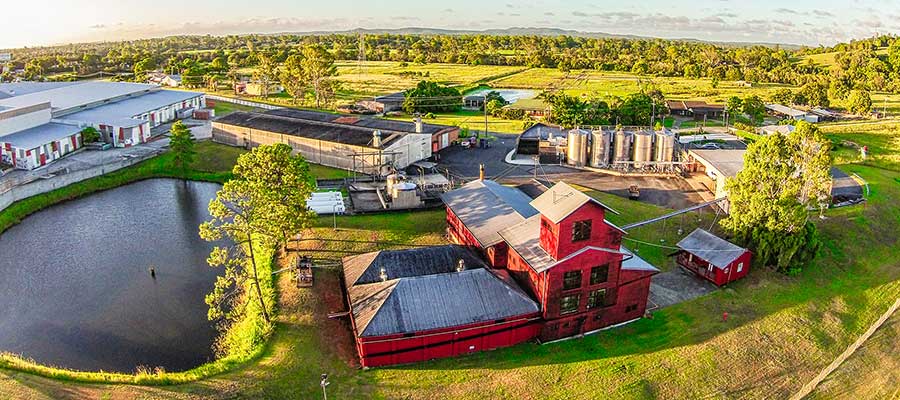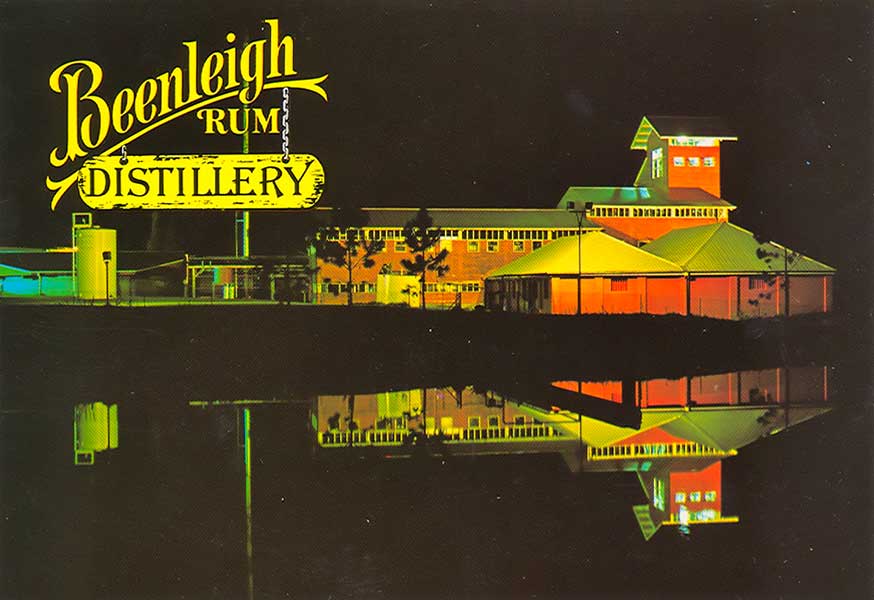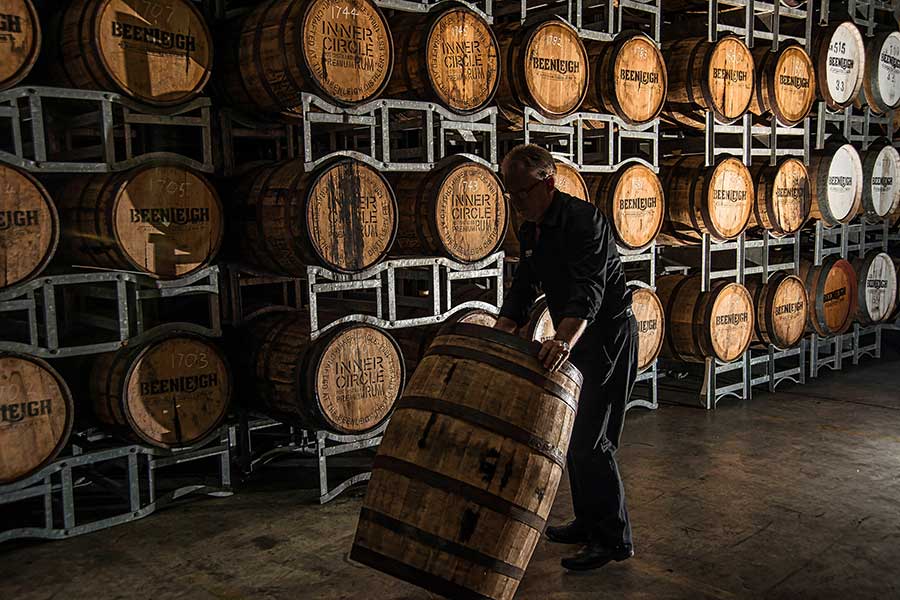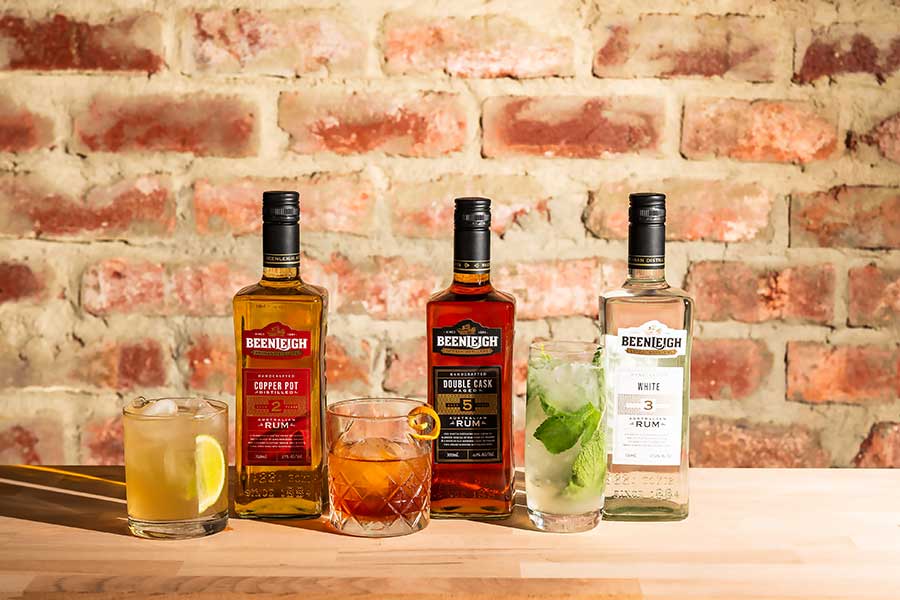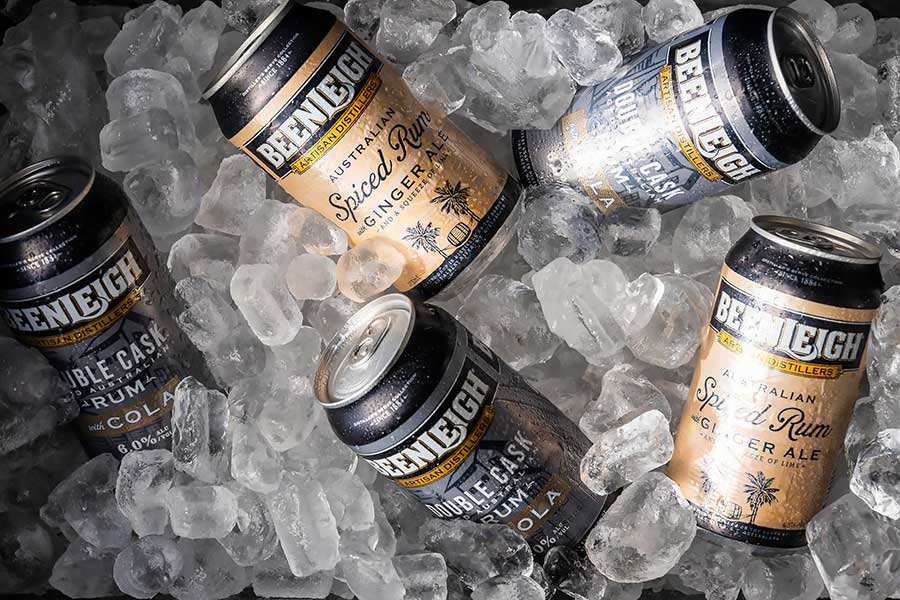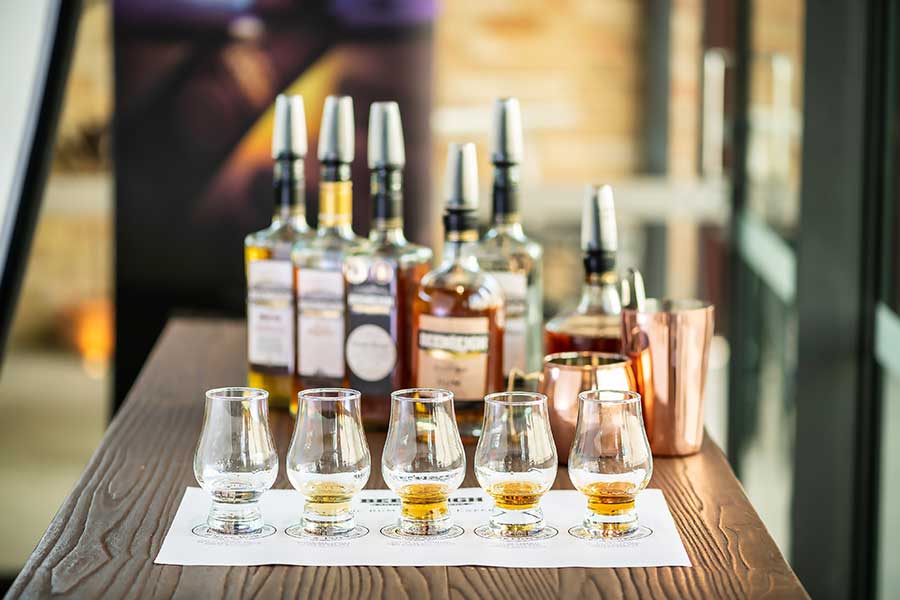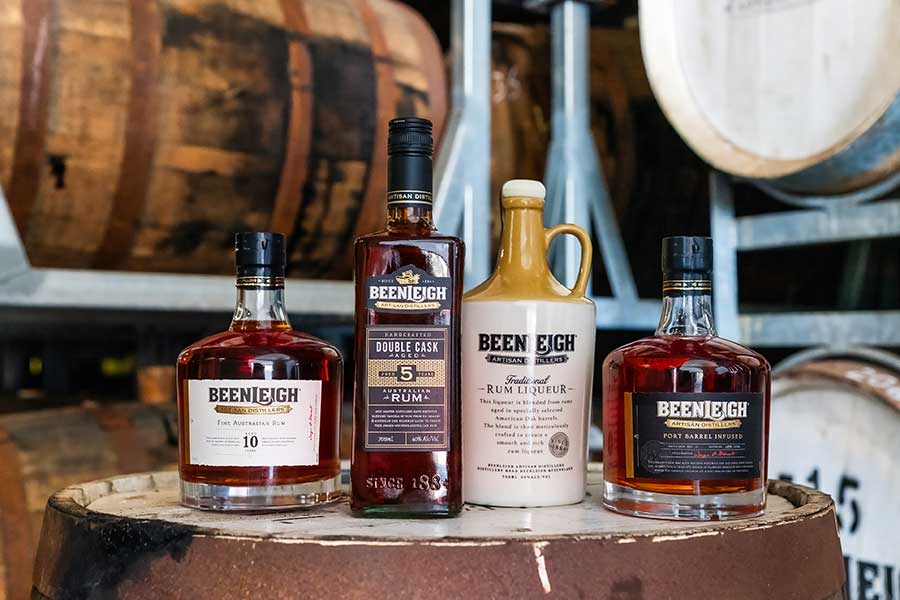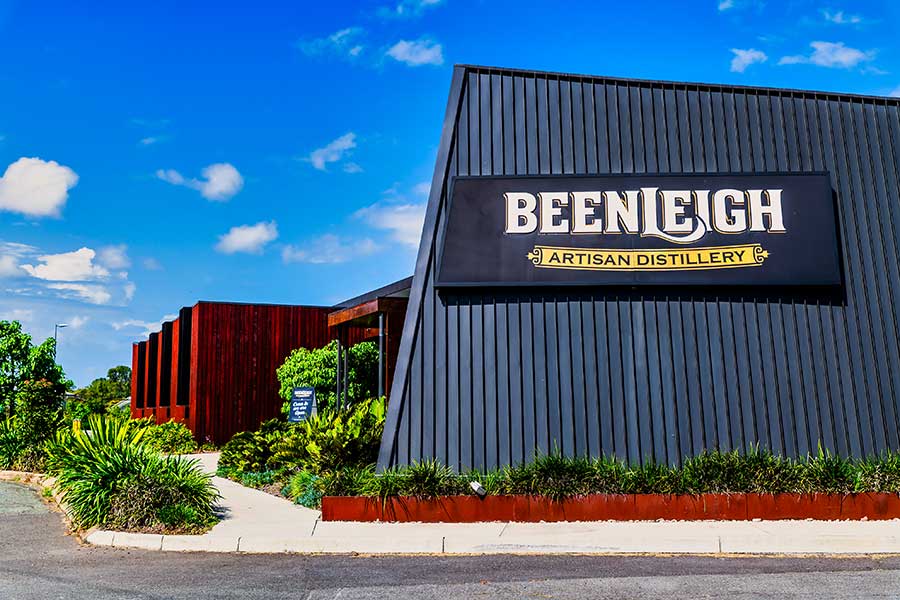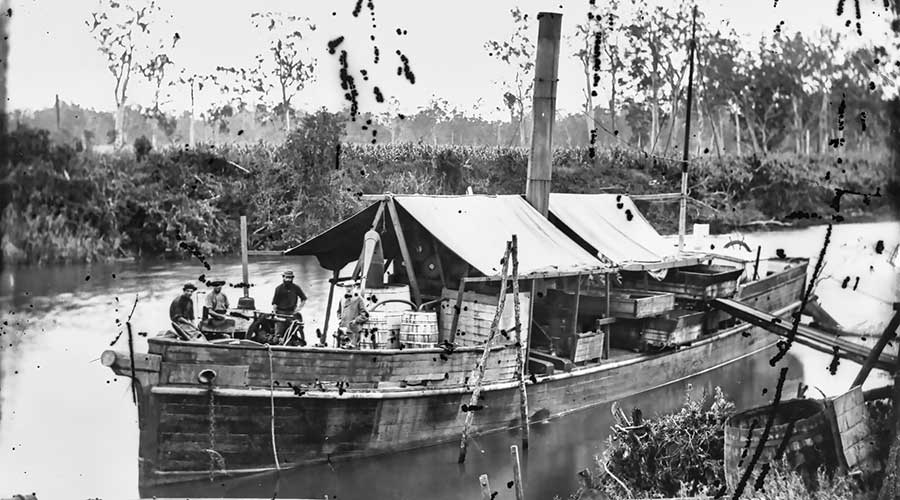No, the giant Bundaberg is not the only Australian rum! Next to it is the more artisanal, more qualitative distillery of Beenleigh, whose products can be found in France thanks to Velier, Plantation, Ferroni or Rum Explorer. Let’s dive into its tormented history and talk about its present, its news and its evolution with its head distiller, Steve Magarry.
Beenleigh, located on the banks of the Albert River in South East Queensland, was originally a cotton plantation. It obtained the right to distill its first rhum, or should we say ‘rum’, in 1884. It was produced from the molasses of the sugarcane grown on the plantation and its surroundings. But let’s not be too hasty.
The beginnings of sugar cane in Australia
Sugar cane would have landed for the first time on the island-continent in 1788 on board the eleven ships making up the “First Fleet”, although Captain James Cook had already had Tahitian sugar cane on board the HM Endeavour when he ‘discovered’ Australia in 1770. The first arrivals of the ‘First Fleet’ in New South Wales were convicts and Australia was a penal colony.
But exile makes you thirsty, so they started illegally importing rum (a marine term that referred to all kinds of brandy, not necessarily from cane) from Bengal in India, Java in Indonesia, Manila in the Philippines, Mauritius, Rio in Brazil and the West Indies.
Very quickly, the colony became difficult to govern and the Crown decided to send the controversial William Bligh (who had already stirred up the Bounty Revolt!) to restore order. He set out to put an end to the rum trade and, after two years of tension, was deposed by the men of his battalion and sent back to England!
It was in 1821 that the first supervised sugarcane plantation was established in Australia, in the Port Macquarie region of New South Wales, using cane imported from Tahiti. They were cultivated by West Indian convicts. As for the first Australian distillery (at least with an official license), it was built in 1863 by Robert Cooper.
The birth of Beenleigh as a plantation and sugar factory
In 1865, Francis Gooding and John Davy, brothers-in-law who arrived in Brisbane from Devon, England, created the “Beenleigh” plantation after their original estate. At first, it was dedicated to the cultivation of cotton, but very quickly, it was converted to sugar cane.
From 1866 to 1872, several rum distilleries started to settle in the region with the Yengarie distillery near Maryborough and the Alexandria and Pleystowe distilleries in the Mackay area. So much so that in 1876, in the entire colony of Queensland, 13 distilleries were in operation. In 1869, Davy and Gooding built a sugar plantation: the Beenleigh Sugar Plantation.
In 1876, the Bailliere’s Gazetteer described the township of Beenleigh as a provincial center serving an area with nine sugar mills and three distilleries within a six kilometer radius. At almost the same time, further north in the Bundaberg area, six sugar mills were in operation by 1880 and the Millaquin refinery was beginning to operate.
With the expansion of production and the establishment of Bundaberg as a “Sugar Politan”, a new problem appeared: overproduction, which was solved by dumping the surplus molasses produced into the local rivers!
1884, rum is produced in Beenleigh for the first time
The fall in the price of sugar and the overproduction probably explain why a distillery was then built in Beenleigh and put into service in 1884. By 1885, Beenleigh, then called Davy and Gooding, had 9877 gallons of rum on hand.
The post office directory for that year lists three distilleries in the area: Ageston, Davy and Gooding and the Loganholme Sugar Company. Many small plantations in the area failed in the 1880s, however, due in part to frost, disease, and soil exhaustion.
The river plains of the Logan area, where many plantations had been established to facilitate transportation, were also prone to flooding. In 1887, a flood caused by the Albert River washed away the entire Davy and Gooding distillery, including a large stock of 8,000 gallons of rum.
However, production was quickly restored after the purchase of distilling equipment from the Ageston Distillery downstream as it closed its own operations. In 1890, a brick liquor store was built in Beenleigh. The Beenleigh Sugar Factory and the distillery were then separated.
Around the same time, the Bundaberg Distilling Company began operating in 1889, next to the Millaquin Refinery, with an experienced West Indian distiller, S. H. Bravo, at the helm.
Early 20th century Beenleigh becomes a ‘modern’ distillery
By the 1890’s, milling had become a more specialized process due to technical advances and many of the surrounding small plantations closed due to the recession of that time.
The Beenleigh distillery, on the other hand, flourished and in 1899 was awarded the diploma and gold medal at the International Exhibition in London. At that time, the distillery also produced a pineapple rum.
In the early 20th century, the distillery changed hands several times until it was bought by Thomas Brown and Sons Ltd in 1917. It was then officially named ‘Beenleigh Rum Distillery Pty Ltd’. In 1922, eight large kauri pine vats were installed while the wooden parts of the stills were replaced by copper vats.
While the development of rail transport allowed molasses to be brought from further north. By the end of the 1920’s, Beenleigh was producing a volume of approximately 1,200,000 bottles per year and required the presence of four full-time excise officers on site!
By 1936, the distillery was described as having its own landing and unloading dock, a complete power plant, a cooperage… in short, all the facilities necessary to make it a self-sufficient producer of fine Australian rum.
At this time, the use of the “Old Copper” pot still distillation equipment to continue producing “Real Beenleigh Rum” was managed by British chief distillers with experience in the famous rum producing regions of Demerara, British Guiana and Jamaica, West Indies.
The brand becomes known
In the 1920s, advertisements for “Genuine Pot Still – Beenleigh Rum” appeared frequently and the brand’s exposure began to expand with various references to cold and cough remedies, Prohibition in the United States, World War I and even the sinking of the Titanic.
With World War II, from 1939 to the mid-1940s, the Beenleigh distillery launched Amity White Rum. Its Beenleigh rum is sold under other brands, including Moreton Rum Company, Bowen Rum Company, Dryandra Rum, Albert River Distilling Company, etc.
The rum of Navy sailors and Operation Jaywick heroes
The British Pacific Naval Fleet used Australian supply contracts during World War II, including rum rations for sailors.
The Beenleigh Distillery provided rum under supply contracts awarded in the early 1940s in conjunction with the Bundaberg Distillery Company and the Colonial Sugar Refinery Distillery in Pyrmont, Sydney.
The Japanese occupation of Singapore during World War II featured a daring Australian Special Forces team, Operation Jaywick, whose clandestine mission was to intercept Japanese naval vessels docked in Singapore harbor in late 1943. The operational supplies for the raid team were “medical supplies” consisting of a dozen bottles of Beenleigh rum. When the group gathered after the successful raid, the commander invited everyone for a drink.
Marine Officer Carse presented a bottle of Beenleigh Overproof Rum and the group enjoyed a small tot before returning to Australia undetected. The mission was considered a resounding success. Note that Beenleigh Rum also traveled to Antarctica in the late 1940s aboard the “Wyatt Earp”, a converted navy ship used by the Australian government for geographical survey and exploration of Heard Island.
The fall and the revival
In 1969, the Beenleigh distillery stopped its production because of the decrease of the demand. However, in 1972, it was bought out and production resumed immediately. A new warehouse, office block and showroom were built.
The “Old Copper” stills were also decommissioned in the late 1970s after the launch of “Charcoal Mellow Dark Rum”. The distillery was flooded in 1974 and all records were lost. Tough times! In 1980, the Moran family acquired the complex. They purchased land adjacent to the distillery, which underwent extensive redevelopment and renovation.
A dam was built on the site. The floor of the liquor store was excavated and two taller sections were inserted into the roof of the distillery, which was painted bright red as it is today. The old fermentation tanks were removed but the maturation tanks were retained, as were the decommissioned copper stills of the Ageston distillery, dating from the 1870s.
During this period, the double pot distilled “Charcoal Mellow Beenleigh Rum” was rectified using American oak charcoal to sweeten it and align with the rum category trends of the 1970s, which favored the demand for light, white column distilled rum.
Modern continuous distillation columns were added to the still and new open fermentation tanks were installed with metal walkways to their upper levels. The work was completed in 1981 with the installation of six open stainless steel fermentation tanks of 30,000 liters each, which were later converted to closed tanks.
In 1984, Tarac Industries acquired a majority interest in the complex, which was modified and expanded as part of a “massive redevelopment.” Several distillery buildings were constructed in the 1990s, including a large machine shed (1992), warehouse, bottling room and offices (1994). At that time, the warehouse was demolished and in 1996, a new warehouse was added.
2000’s, first medals and integration of Inner Circle
In 1995, Beenleigh Rum was awarded the prestigious International Wine and Spirits Competition (IWSC) Rum Trophy and was judged the “Best Rum in the World”. In the early 2000s, the iconic Australian brand Inner Circle Rum was reintroduced to the market through a development process at Beenleigh involving the fermentation of 100% ‘Schizosaccharomyces pombe’ yeast culture blended with musts fermented with traditional ‘Saccharomyces cerevisiae’.
The Inner Circle rum range then included the ‘Red Dot’ at 40% alcohol, the ‘Blue Dot’ at 45% (exported to the USA), the ‘Green Dot’ at 57.2% navy strength and the infamous ‘Black Dot’ at 75.9%. The IWSC Rum Trophy was again awarded to the Beenleigh distillery for the Inner Circle rum in 2002.
This Inner Circle line has been noticed by industry legends such as David Wondrich, whose several “Killer Cocktail” recipes use Navy Strength “Green Dot” rum as a substitute or alternative to the high ester Jamaican pot still rum, no less!
Major improvements were made to Beenleigh in 2004, including the installation of a 15,000-liter copper still. The rums are now produced using the unique process of column and pot still distillation. At the same time, purification and rectification columns for the production of neutral cane alcohol were put into service.
From 2007 to 2012, the distillery’s operations underwent several upgrades to increase production capacity and maturation storage for American oak and ex-brandy barrels and casks. The current owners, Bickfords’ Australia, purchased the Beenleigh distillery in 2012; they focus on spiritourism and have a visitor center built for offering tours, tastings, experiences and exclusive events.
In 2017, the distillery flooded again and production ceased for many months. In recent years, Beenleigh Rum and Inner Circle Rum have received numerous IWSC and San Francisco Spirits Competition medals and were honored with the Australian Distilled Spirits Awards Champion Trophy in 2018 for the rum category.
2020 celebrated 40 years of service by Head Distiller, Wayne Stewart, who has been at the heart of Beenleigh’s distillery and rum production transformations since the early 1980s and is an integral part of Beenleigh’s 137 year history of rum.
A distillery on a boat!
A mobile distillery, mounted on a steamboat called the ‘SS Warlus’, also served the numerous plantations located along the Albert, Nerang and Coomera rivers. It was equipped with a 500-gallon wooden tank with swan neck and copper coil.
It was able to operate from 1869 to 1872, stopping as the license was not renewed, but this did not prevent the distillery from continuing their production illegally until 1884 and being stranded on the banks of the Albert River. His pot still was sold to Beenleigh.

